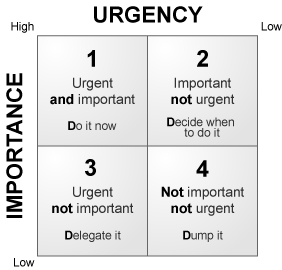Maximizing the work NOT done
One of the principles of the Agile Manifesto makes the seemingly paradoxical statement: “the art of maximizing the amount of work not done”. This statement is part of the 10th principle of this Agile Manifesto. The complete 10th principle reads as follows:
“Simplicity–the art of maximizing the amount of work not done–is essential”
When I first heard this statement it puzzled me and I couldn’t really grasp the meaning of it. I would think that you would want to maximize the things done. According to this
statement simplicity is equal tothe art of maximizing the amount of work not done.
An example
To clarify this statement imagine the following: You have a to-do list with more than 100 items on it. Besides that you have a NOT-to-do list with 0 items on it.To simplify the to-do list we have to inspect it and search for:
- Duplicates
- Unnecessary complexities
- Dependencies
When we have done this we should also look at external factors like
- time
- budget
- demand
Furthermore we have to declutter and prioritize our to-do list. Based on all these factors we can move as much items from our to-do list to our NOT-to-do list as possible. According to the Agile Manifesto this is the art of maximizing the work not done a.k.a. Simplicity.
Why not everything?
You might say, “Why not just place everything on the NOT-to-do list?” To qualify our example, note that we should make our to-do list as simple as possible, without losing any of its usefulness! In other words we can’t take so much off our to-do list that it is no longer useful. Eliminating waste is key to this principle and as Albert Einstein once said:
Everything should be made as simple as possible, but not simpler.
Some tips
- Eliminate low importance and low urgency issues. I.e. put them on the NOT-to-do list.
- Always try to keep your processes as simple as possible, without the end-product losing its desired functionality.
- Ask yourself if you are producing something that is most useful with the least amount of time.
Highly effective…

The interesting part of this principle is that it is generally applicable. This principle is true and important for a wide range of processes outside the software industry and can even be applied on our own personal lifes. It is a principle of time management and of work optimization, and many different expressions of this same principle are out there.
Stephen Covey’s third habit: “First things first”, is a slightly different expression of the same thing.
Maximize the number of items in the fourth quadrant (the NOT-to-do list), so you can dump it! I’ll conclude with another expression of this same principle, most of us already know as KISS (no pun intended).
Reference: Maximizing the work NOT done from our JCG partner Gideon Liem at the Agile Arts blog.


